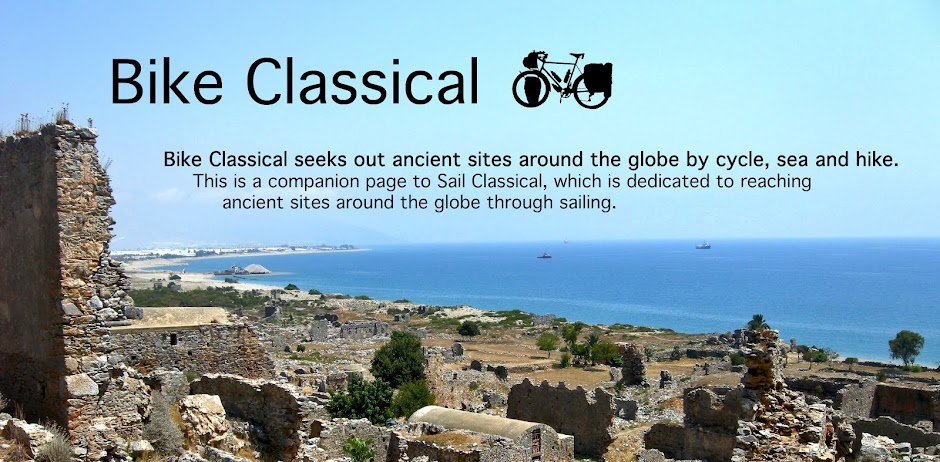Photos by Jack A. Waldron

Hasanoglu Village is only 4 kilometers from the ancient city of Sugga (modern Elif), and about 8 kilometers from Hisar Village, site of the Hisar Mausoleum. All three of these communities have as their centerpieces, beautifully constructed mausoleums dating from from the late 2nd or early 3rd century CE.
While all three mausoleums have striking similarities, their differences stand out. The Mausoleum of Hasanoglu more resembles that of the Mausoleum of Hisar, both having arched vaults on all four sides, as opposed to the Mausoleum of Elif, which has only three arches.
One of the starkest differences between the three mausoleums are their roofs. The roof of the mausoleum in Hisar curves on all sides as its rises to its pyramidal peek, where as that of the mausoleum in Elif rises like an Egyptian pyramid, with straight flat surfaces.
As for the roof of the Hasanoglu mausoleum, well, as you can see from the photos, there is no roof. Why the restoration did not include making the structure whole again I do not know, but I can guess that the same or similar reason applies here as did for the Septimius Severus Karasu Bridge.
The Mausoleum of Hasanoglu has high basement with newly fashioned stone ashlar blocks and a new wooden door securing the entrance to the tomb (pictured above). Atop the high basement is a flat platform that supports four groups of pseudo Corinthian columns with fluted relief stretching their lengths (pictured below).
The entablature of the high basement is simpler in design, meaning, no Medusa reliefs, Syrinx flutes, scissors, swords or shields on display, as is the case for the Mausoleum of Elif. Further, the roof entablature is also of a basic design, much of which is from newly sculpted stone.
The four groups of pseudo columns make for a very strong and sturdy structure, and also give inward pressure and force to counter the outward pressure on the corners by the four arches.










